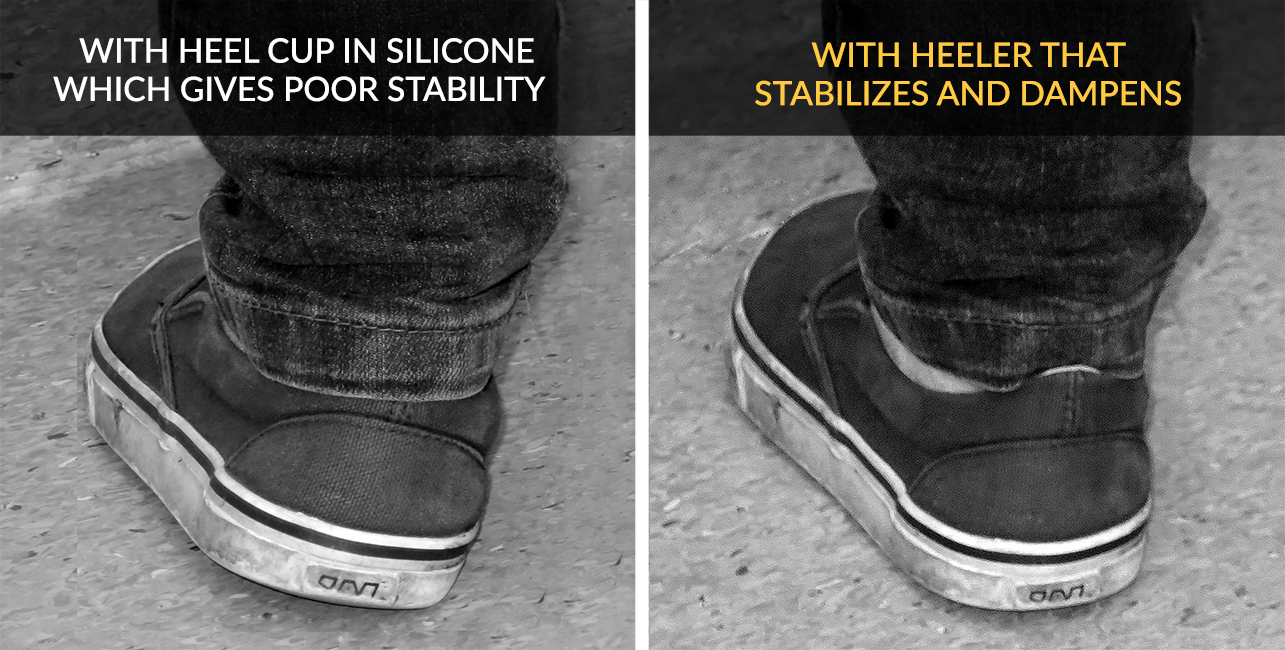Children’s heel pain
Where does it hurt?
The pain is in the back of the heel bone and usually occurs in correlation to an activity or a sport.
When pressing the sides of the rear portion of the heel it is sensitive. Often the pain comes when the child is rested – a while after the activity. Some children have a tenderness around the heel in the mornin, that decreases during the morning only to increase again in the afternoon/evening.
The symptoms come and go over approximately one year, but sometimes the symptoms persist longer. Both heels can be affected simultaneously. Some children are diagnosed with tendinitis or heel spur, but this is very rare. It is almost exclusively about the tenderness of growth cartilage.
Why does it hurt?
The pain is due to a tenderness in the heel growth cartilage in the rear of the heel bone.
The problem seems to have increased, and there are many reasons why such as organized physical activities, like football, hockey and gymnastics. Other examples are changes in surfaces when playing sports as well as thin shoes/sneakers.
The condition often affects the entire family and creates great anxiety causing frequent contacts with healthcare. When children/young people cannot participate in their activities, they feel alienation, stop participating in physical activity and become inactive.
How is it treated?
The condition is harmless and will disappear by itself, but it can take a long time and be persistent.
Heeler Junior provides the optimal treatment for this harmless and lengthy state. The pain is due to a soreness in the heel’s growth zone. No medications, molded arch support or other treatments help with this condition.
Importantly Heeler Junior should be used constantly in all shoes, even inside shoes. The aim is to provide heel shock absorption. Only if the pain persists four months after constant treatment with Heeler Junior should healthcare be contacted.
The difference between other heel cups and heeler
Many of the heel cushions sold are made of soft materials such as silicone. Children and young people’s feet have a natural pronation (angled inwards), and need the heel cup to be of a firmer material to provide better support. Heeler is developed with regard to this while providing maximum shock absorption and pain relief.

